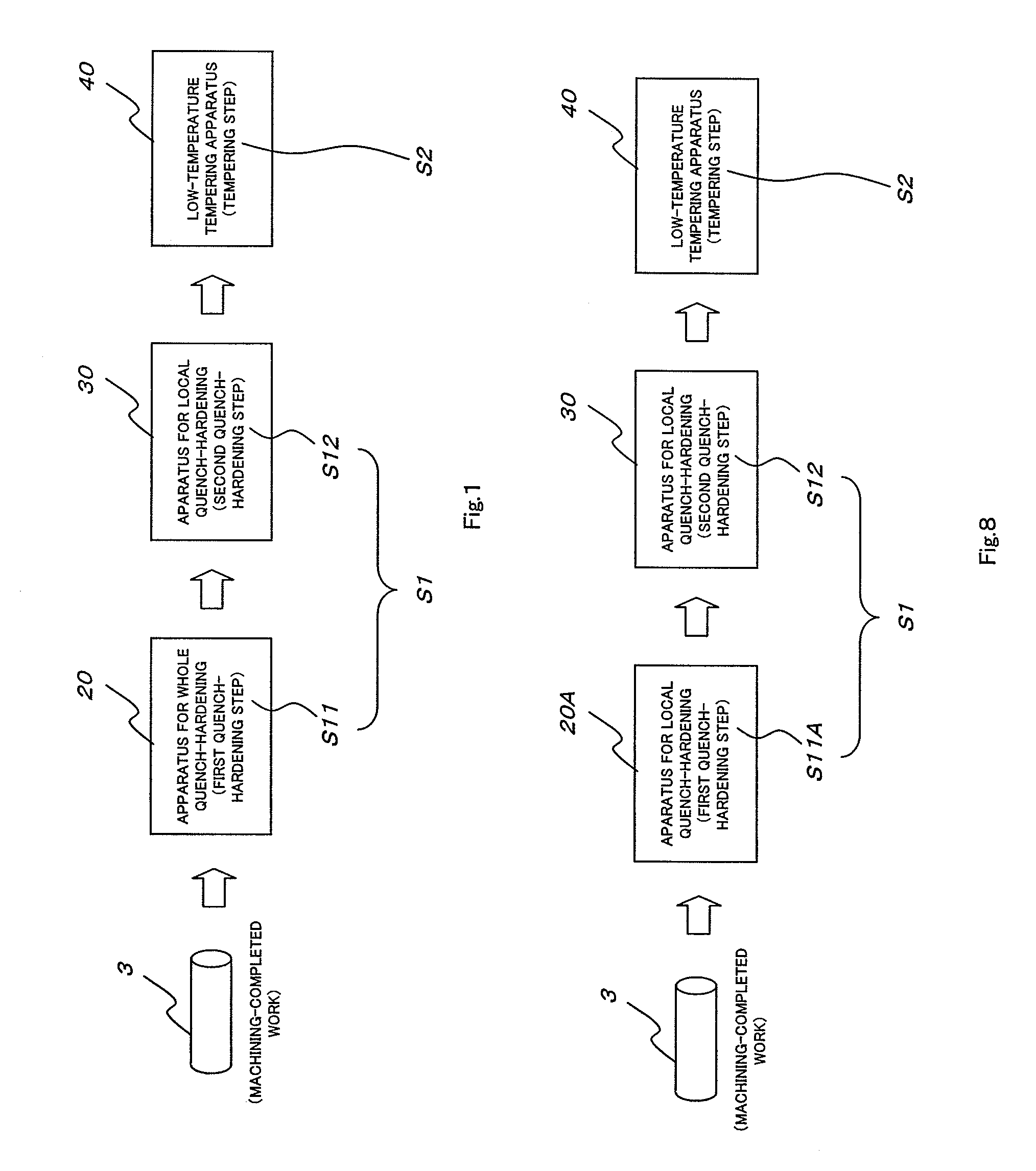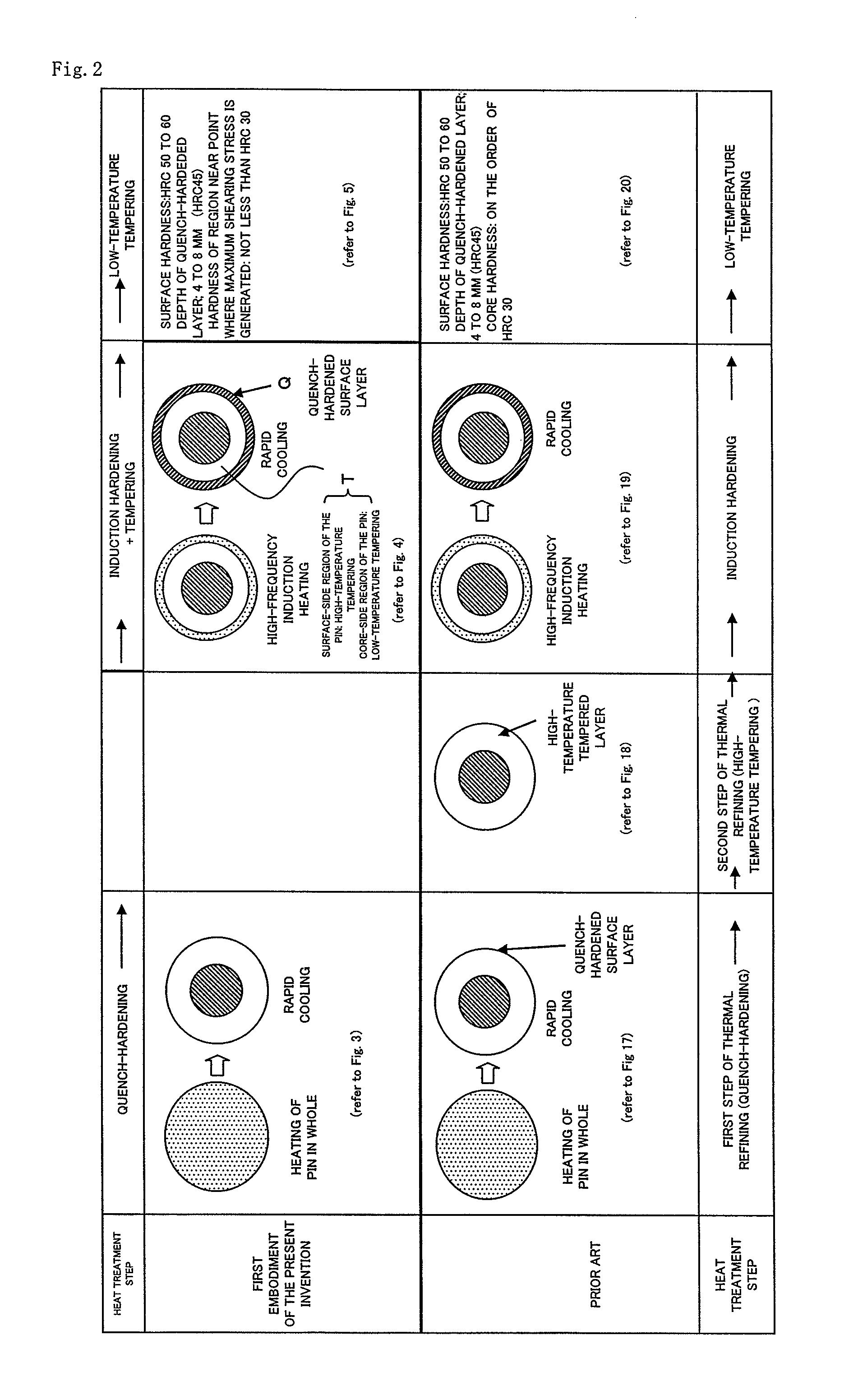Heat treatment method of pin for endless track
a technology of endless track and heat treatment method, which is applied in the direction of heat treatment furnaces, heat treatment equipment, furnaces, etc., can solve the problems of increased inability to obtain necessary wear resistance and strength, and increase the cost of carburizing gas, so as to reduce manufacturing costs and reduce the effect of high compressive residual stress and improved productivity
- Summary
- Abstract
- Description
- Claims
- Application Information
AI Technical Summary
Benefits of technology
Problems solved by technology
Method used
Image
Examples
first embodiment
[0064]The method according to the present invention is described hereinafter with reference to FIGS. 1 to 7.
[0065]In the method according to the first embodiment, the large-sized pin 3 is manufactured according to steps of a flow sheet shown in FIG. 1, after completion of machining.
[0066]FIG. 2 shows the method according to the first embodiment of the present invention in comparison with the prior art (the prior art wherein the first step of thermal refining, that is, a quench-hardening, the second step of thermal refining, that is, high-temperature tempering, the high-frequency induction hardening, and the low temperature tempering are carried out) described with reference to FIGS. 17 to 20. More specifically, in FIG. 2, there are schematically shown metallic microstructures of the pin, in cross section, in respective steps (manufacturing processes) of the method according to the first embodiment of the present invention in comparison with metallic microstructures of the pin, in cr...
second embodiment
[0121]Next, the present invention is described hereinafter with reference to FIGS. 8 to 12.
[0122]In the second embodiment as well, heat treatment is carried out to a pin as a constructional part of the endless track 10 (refer to FIG. 13) for use in, for example, the construction vehicle, such as an excavator, bulldozer, and so on.
[0123]In a method according to the second embodiment as well, a large-sized pin as large as 50 mm or more in diameter is cited by way of example, however, the method according to the second embodiment is applicable to a small-sized pin, and a medium-sized pin, as well.
[0124]In the method according to the second embodiment of the present invention, a large-sized pin 3 is manufactured according to steps of a flow sheet shown in FIG. 8, after completion of machining.
[0125]FIG. 9 shows the method according to the second embodiment of the present invention in comparison with the prior art (the prior art in which the first step of thermal refining, that is, a que...
PUM
| Property | Measurement | Unit |
|---|---|---|
| diameter | aaaaa | aaaaa |
| length | aaaaa | aaaaa |
| length | aaaaa | aaaaa |
Abstract
Description
Claims
Application Information
 Login to View More
Login to View More - R&D
- Intellectual Property
- Life Sciences
- Materials
- Tech Scout
- Unparalleled Data Quality
- Higher Quality Content
- 60% Fewer Hallucinations
Browse by: Latest US Patents, China's latest patents, Technical Efficacy Thesaurus, Application Domain, Technology Topic, Popular Technical Reports.
© 2025 PatSnap. All rights reserved.Legal|Privacy policy|Modern Slavery Act Transparency Statement|Sitemap|About US| Contact US: help@patsnap.com



